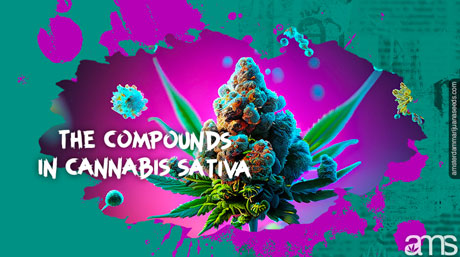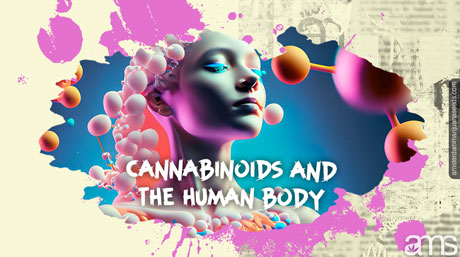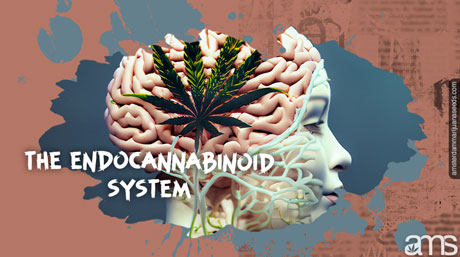 By:
Joe Green
By:
Joe Green
The world of CBD (Cannabidiol) is as vast and varied as the benefits it is believed to hold. Among the many forms of Cannabidiol products available, three stand out for their unique properties: Full-Spectrum CBD, Broad-Spectrum CBD, and CBD Isolate. They differ mainly in their composition of cannabinoids, the biologically active compounds in the Cannabis Sativa plant.
Full-Spectrum CBD retains all the components found naturally in the cannabis plant. This includes CBD, other cannabinoids, terpenes, flavonoids, and a trace amount of THC (Tetrahydrocannabinol) – often less than 0.3%. The combination of these substances creates what’s known as the ‘entourage effect,’ where all the components work synergistically to enhance each other’s effects. This is believed to make full-spectrum Cannabidiol more potent and beneficial than its isolated components.

Broad-spectrum CBD, on the other hand, has THC entirely removed, while retaining all other cannabinoids and plant compounds. This is an excellent option for individuals who may be sensitive to THC or who live in regions where THC is still legally restricted. Broad-spectrum Cannabidiol offers the ‘entourage effect’ benefits without the potential legal and psychoactive implications associated with THC.
Lastly, CBD isolate represents the purest form of CBD available on the market. It contains 99% pure CBD, with no other cannabinoids or plant compounds. As such, it provides a way for individuals to enjoy the potential benefits of Cannabidiol without any other cannabinoids. This can be beneficial for those who need high doses of Cannabidiol or for those who prefer to have absolute control over the amount of Cannabidiol they’re taking.
Cannabis Sativa, the plant where Cannabidiol is derived, is a complex organism, home to over 120 different chemical substances. The compounds that have garnered the most attention, however, are the cannabinoids. These include not only CBD and THC but also CBG (Cannabigerol), CBN (Cannabinol), CBC (Cannabichromene), CBDV (Cannabidivarin), and a host of others.
Each of these cannabinoids boasts unique properties and molecular structures. But what’s most intriguing about them is how they interact with the endocannabinoid system (ECS) – the body’s own complex network of receptors and signaling molecules. Cannabinoids, including those found in cannabis, engage with this system by attaching to the surface of cells where cannabinoid receptors, CB1 and CB2, are located.
This process is crucial in understanding the effects of cannabinoids, which vary considerably depending on which receptors they bind to and where in the brain these receptors are located. For instance, cannabinoids that bind to the limbic system – the brain’s emotional center – can influence memory, cognition, and psychomotor performance. They can also alter the brain’s reward and pleasure center and modulate how we perceive pain.

Cannabinoids, an array of diverse compounds found in cannabis, are widely recognized for their potential therapeutic benefits. The classification of cannabinoids often extends beyond the simple ‘major’ or ‘minor’ categories, especially when considering their individual characteristics and psychoactive potential.
Psychoactivity, the ability to alter one’s mental state, is a defining property when it comes to distinguishing between different cannabinoids. The two most researched and well-known cannabinoids – CBD (Cannabidiol) and THC (Tetrahydrocannabinol) – illustrate this distinction clearly.
CBD, CBG (Cannabigerol), and CBC (Cannabichromene) are non-intoxicating cannabinoids, meaning they don’t produce the psychoactive ‘high’ typically associated with cannabis. Their molecular structures prevent them from binding directly to the CB1 receptors in the brain, which are responsible for the psychoactive effects of cannabis.
Cannabidiol, in particular, has gained widespread popularity due to its potential therapeutic benefits. This cannabinoid is being investigated for its potential to manage conditions such as anxiety, chronic pain, and epilepsy, among others. Its non-intoxicating nature has made it a valuable addition to various consumer products ranging from dietary supplements to cosmetics.
CBG, often referred to as the ‘mother of all cannabinoids’, is the chemical precursor from which all other cannabinoids are synthesized. Although research on CBG is relatively nascent, early studies suggest it may hold promise in areas like neuroprotection, eye health, and cancer treatment.
CBC, on the other hand, is a lesser-known cannabinoid that’s garnering increasing attention. Emerging research points to potential anti-inflammatory, antidepressant, and cancer-fighting properties of CBC, among other possible benefits.
In contrast, THC, CBN (Cannabinol), and certain other cannabinoids can induce varying levels of psychoactivity. THC, the primary psychoactive compound in cannabis, binds directly to the CB1 receptors, causing the characteristic ‘high’ associated with cannabis use. Its potential therapeutic applications include pain relief, nausea reduction, and appetite stimulation.
Interestingly, when THC degrades, typically due to exposure to oxygen and heat over time, it converts into CBN. While CBN is only mildly psychoactive, early research suggests it may have sedative effects and potentially aid in sleep regulation, making it a subject of interest for sleep disorder studies.

The human body is a remarkable ecosystem with the ability to interact with a vast array of external compounds, including cannabinoids. This interaction happens mainly through a complex, built-in network known as the endocannabinoid system (ECS). The ECS plays a crucial role in maintaining the body’s physiological balance, also known as homeostasis, regulating a wide range of biological processes.
The ECS comprises endocannabinoids (cannabinoids produced naturally by the body), enzymes responsible for synthesizing and degrading these endocannabinoids, and receptors that these endocannabinoids bind to. Two primary types of receptors in the ECS are the CB1 and CB2 receptors. The distribution and function of these receptors differ substantially and dictate how various cannabinoids interact with them.
CB1 receptors are primarily found in the brain and central nervous system. They’re the primary targets of THC, explaining why THC has psychoactive effects. CB1 receptor activation can influence memory processing, pain regulation, and motor control, among other functions.
CB2 receptors, on the other hand, are typically associated with the immune system and peripheral tissues. These receptors are linked with the regulation of inflammatory responses. When cannabinoids like CBD, which has a higher affinity for CB2 receptors, are consumed, they can help modulate inflammation and immune responses.
Cannabinoids, by interacting with the ECS, can influence a host of physiological processes, such as memory, appetite, pain sensation, mood, immune function, cognitive processes, and fertility. They can even regulate body temperature. How each cannabinoid impacts these processes largely depends on their interaction with the ECS and their affinity for CB1 and CB2 receptors.
Given the intricate interplay between cannabinoids and the human body, understanding each cannabinoid’s specific profile, potential benefits, and their interaction with the ECS is critical. This knowledge can help guide, safe and effective therapeutic use of cannabinoids, individualized to cater to unique health needs and responses. As scientific research continues to unfold the potential of cannabinoids, they are set to play an increasingly prominent role in the future of health and wellness.

The specific effects of individual cannabinoids, such as CBD, CBDA, CBN, CBG, CBC, and CBDV, can vary greatly. Some may be more beneficial for specific conditions or symptoms, while others may offer a broader range of potential benefits. Understanding the unique interaction of each cannabinoid with the ECS is key to maximizing their therapeutic potential and choosing the best form of Cannabidiol – be it full-spectrum, broad-spectrum, or isolate – for your individual needs. The world of cannabinoids is vast and intricate, and as science continues to uncover their secrets, we’ll have a better understanding of how best to utilize them for overall health and wellness.
Additionally, for those seeking to explore the world of cannabinoids and cultivate their own CBD-rich plants, it’s worth considering reliable sources like Cheap CBD Seed to ensure access to high-quality genetics and potential cost savings.
The primary differences lie in their molecular structure and their psychoactive properties. For instance, CBD, CBG, and CBC are non-intoxicating, meaning they don't produce a 'high'. Conversely, THC and CBN can induce varying levels of psychoactivity.
CBD is studied for potential benefits in managing conditions like anxiety, chronic pain, and epilepsy. CBG, while less studied, shows promise in neuroprotection and cancer treatment. CBC has potential anti-inflammatory, antidepressant, and cancer-fighting properties.
THC is psychoactive because it binds directly to the CB1 receptors in the brain. CBD, however, doesn't bind directly with CB1 receptors, making it non-intoxicating.
When THC degrades, typically due to exposure to oxygen and heat over time, it converts into CBN, a mildly psychoactive cannabinoid with potential sedative properties.
The ECS is a complex network within the body that helps regulate various biological processes. It's made up of endocannabinoids, enzymes, and receptors that cannabinoids can bind to.
CB1 receptors, primarily found in the brain and central nervous system, are the primary targets of THC, while CB2 receptors are associated with the immune system and inflammatory responses.
By interacting with the ECS, cannabinoids can influence a host of physiological processes, including memory, appetite, pain sensation, mood, immune function, cognitive processes, and even body temperature. The impact of each cannabinoid depends on its interaction with the ECS and its affinity for CB1 and CB2 receptors.
[magento_products id=”163,102,38″]













Related Posts

The endocannabinoid system (ECS) is a pivotal biological network within the human body, vital for maintaining homeostasis across various physiological functions. It’s comprised of endocannabinoids, enzymes, and receptors. This system influences everything from sleep, mood, appetite, memory, reproduction, and even our immune response.
When you consume marijuana, the plant’s cannabinoids, THC and CBD, interact with your ECS in significant ways…

Discover medical cannabis, including how it works and why people use it.

In recent years, the popularity of CBD-rich cannabis strains has skyrocketed. This shift in focus from THC to CBD mirrors the growing understanding of the therapeutic benefits that this non-intoxicating cannabinoid can provide. Many individuals today seek out cannabis strains high in CBD, renowned for their calming and therapeutic effects. Whether your aim is to create homemade CBD oil or…